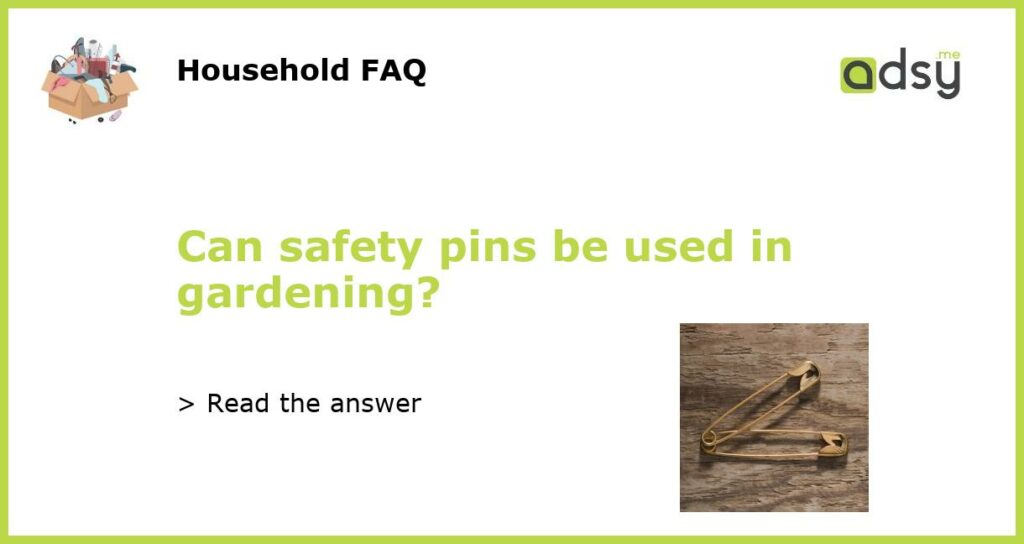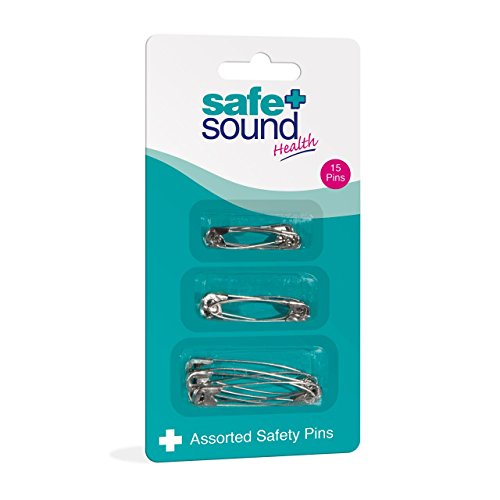Can Safety Pins Be Used in Gardening?
Heading 1: What Are Safety Pins?
Safety pins are commonly used for fastening pieces of fabric together. They consist of a thin metal pin with a spring mechanism that holds it in place. Safety pins come in various sizes, with the most common being about 1 to 2 inches long. They have a variety of uses ranging from clothing repairs to craft projects, but can they be used in gardening?
Heading 2: Uses of Safety Pins in Gardening
While safety pins might not be the first item that comes to mind when thinking about gardening tools, they can actually be quite useful in certain situations. Here are a few ways safety pins can be used in gardening:
1. Plant Identification: Safety pins can be used to attach small tags or labels to plant stems or branches. This is especially helpful when starting seeds or planting multiple varieties of the same plant. By labeling them with safety pins and tags, you can easily keep track of what you planted where.
2. Plant Training: Safety pins can also be used as a temporary support for plants that need a bit of help while they grow. You can gently pin a branch or stem to a trellis or stake to keep it upright. This can be particularly useful for young, fragile plants or vines that need guidance as they climb.
3. Pest Control: Another use for safety pins in gardening is as a deterrent for pests. Some gardeners have found success in using safety pins to create barriers around certain plants. For example, by attaching safety pins to a string and placing it around plantings, it can deter small rodents or birds from digging up or eating your crops.
Heading 3: Choosing the Right Safety Pins for Gardening
Not all safety pins are created equal, and certain factors should be considered when choosing the right ones for gardening. Here are a few tips to keep in mind:
1. Size: Choose a size of safety pin that is appropriate for the task at hand. For plant identification, smaller safety pins will likely be more discreet and less intrusive on the plants.
2. Material: Opt for safety pins made of rust-resistant materials, such as stainless steel or zinc-plated steel. This will ensure that they can withstand the outdoor conditions in the garden and last longer.
3. Safety: Ensure that the safety pins you choose have a secure lock mechanism to prevent accidental openings. This is especially important if you are using them to support plants or create barriers.
Heading 4: Safety Considerations and Alternatives
While safety pins can be helpful in certain gardening situations, it is important to take some safety considerations into account. Here are a few tips to keep in mind:
1. Avoid Damage: Be mindful when using safety pins in the garden to avoid puncturing or damaging plant tissues. Opt for attaching the safety pin to non-essential parts of the plant, such as a stem or branch, rather than sensitive areas like the main trunk.
2. Temporary Use: Safety pins should be used as a temporary solution in the garden. They are not meant to be a long-term support or permanent fixture. Once the plant has grown stronger or the need for support has passed, the safety pin should be removed.
3. Alternatives: There may be alternative gardening tools or supplies that can better serve the purpose you have in mind. For plant identification, for example, you could use specialized plant markers or tags. For plant training or support, consider using plant ties or clips specifically designed for that purpose.
Heading 5: Conclusion
While safety pins may not be a traditional gardening tool, they can certainly be used in certain situations to aid in plant identification, training, and pest control. By choosing the right size and material, being mindful of safety considerations, and using safety pins as temporary solutions, they can be a handy addition to your gardening toolbox. However, it is important to remember that alternative gardening tools or supplies may be more suited to the specific task at hand. So, give safety pins a try in the garden, but also consider other options that may better cater to your gardening needs.






